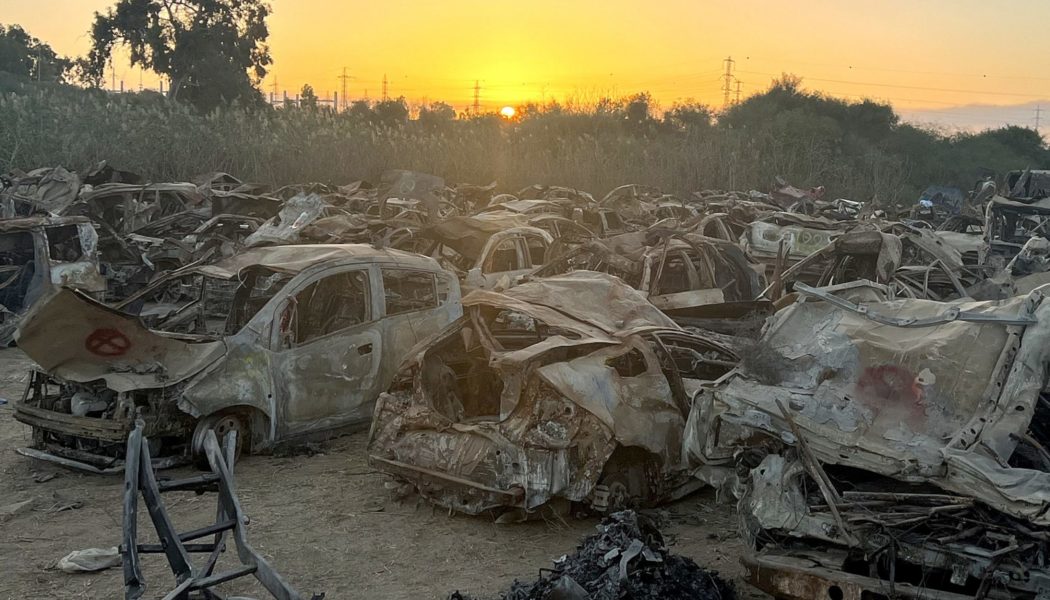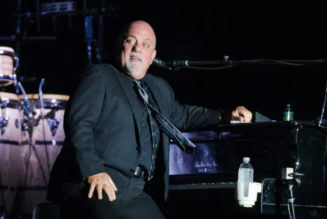NETIVOT, Israel — Editor’s note: This reporting contains extremely graphic descriptions.
The camera pans wildly, showing the chilling and frantic first-person view of a first responder searching for survivors, any survivor among a sea of lifeless, bloodied bodies after Hamas’ brutal attack last month on the Supernova music festival in the Negev desert in southern Israel.
“Can anyone give a sign of life?” 45-year-old Eren Masas asks from behind the camera of the Oct. 7 footage, as the view swings around to show body after body strewn across the ground.
“Anyone… Someone… Can someone answer? Please!” Masas says in the video.
No one does.
Watch Eren Masas tell his chilling story on “World News Tonight” on Wednesday, Nov. 8.
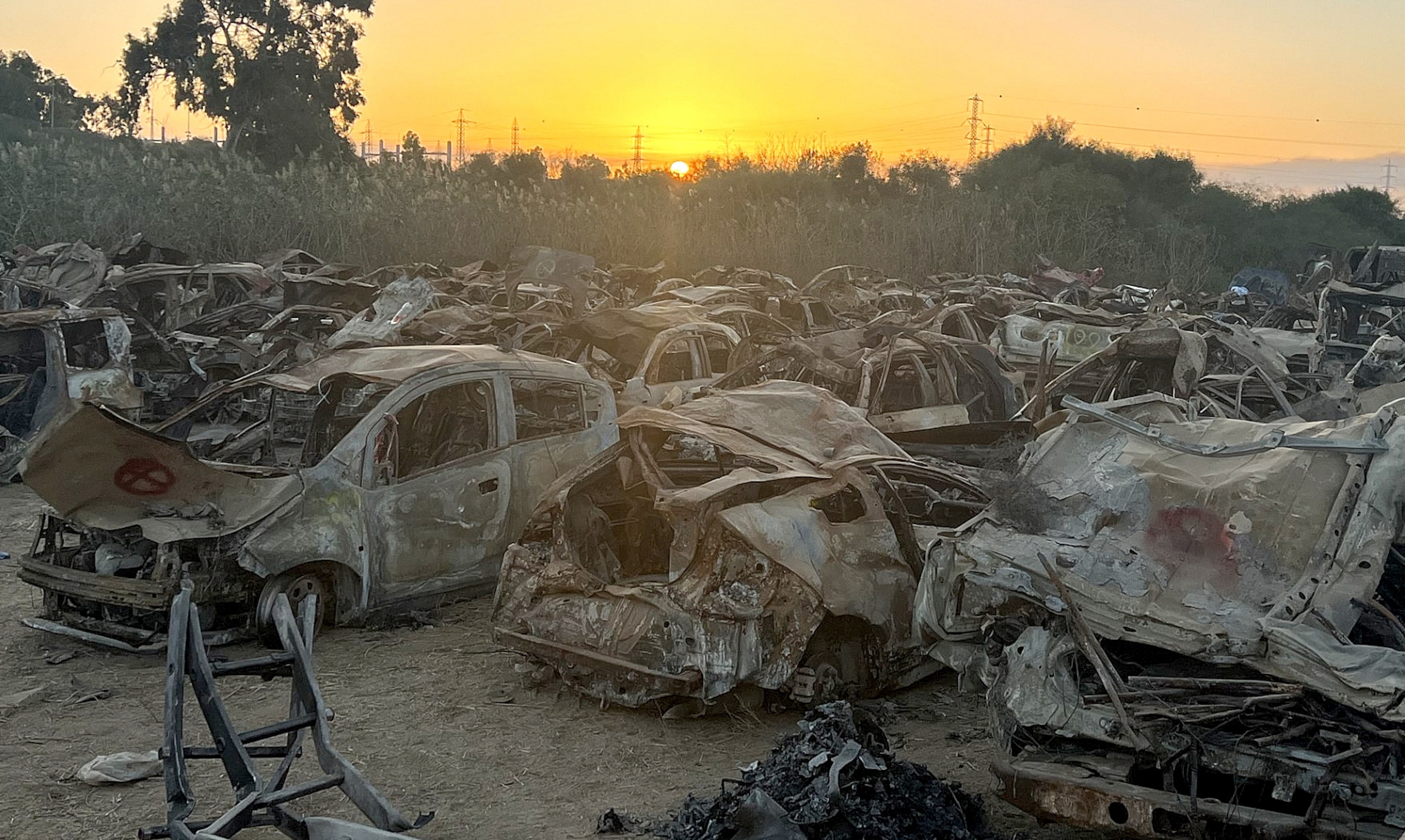
In a field near Netivot, Israel, hundreds of burnt-out vehicles were recovered from the scene of the deadly Supernova music festival massacre. Hamas terrorists brutally murdered more than 260 people there on October 7, making it one of the worst civilian casualty incidents in Israel’s history.
Becky Perlow/ABC News
On Oct. 7, as Hamas terrorists launched an unprecedented attack on Israel, pillaging, kidnapping and killing civilians across several towns, one of the first targets was the music festival. At least 260 people were killed at the music festival, making it one of the worst civilian casualty incidents in Israel’s history.
Masas’ chilling video footage, showing his search for signs of life among dozens of bodies after the massacre at the music festival, has been circulating online. ABC News reviewed the footage, confirmed with Masas that it is his voice in the video and that he took the video, and also reviewed another longer video that had circulated on Telegram.
On Tuesday, Masas met ABC News at a closed security area near Netivot in the south of Israel, just 5 miles from the Gaza border, where the Israeli military has gathered what remains of the cars from the music festival. He spoke about the widely shared, brutally graphic video footage he took that day.
Earlier in the morning on Oct. 7, Masas said he awoke to five missed calls from his brother, and he knew something terrible had happened. His brother urged him to turn on the television, he said, but nothing prepared him for what he was about to see.
“I saw the truck of Hamas and thought, ‘This is not good. This is not Israel,'” Masas said, adding it reminded him of waking up on 9/11 and learning the news about the coordinated terrorist attacks on the World Trade Center in New York City and at the Pentagon, and the plane that crashed in Pennsylvania. He said he ran and grabbed his Israel Defense Forces uniform, jumped in his car and started driving south toward Gaza.
Masas is a retired army reservist with 25 years of service who pulled on his uniform and grabbed his personal gun when he responded to the site of the music festival.
Along the way, a friend called to tell him about young kids running away from a music festival and pleaded with Masas to come help.
Masas arrived to find terrified people running toward him, begging him for his phone to call their parents, their friends, the police — anyone. After helping them, he pushed farther into the festival area, where he said he encountered his first terrorist.
“They were all over the place. Some of them were dead. And then one of them came [in] my direction,” said Masas, adding he then shot and killed the terrorist. That’s when he realized the attack was much bigger than he had thought, he said. That’s when he took out his phone to start recording.
“I said to myself, ‘I must film that, because if I will not film that, nobody will ever believe that this is what I see,'” Masas said.
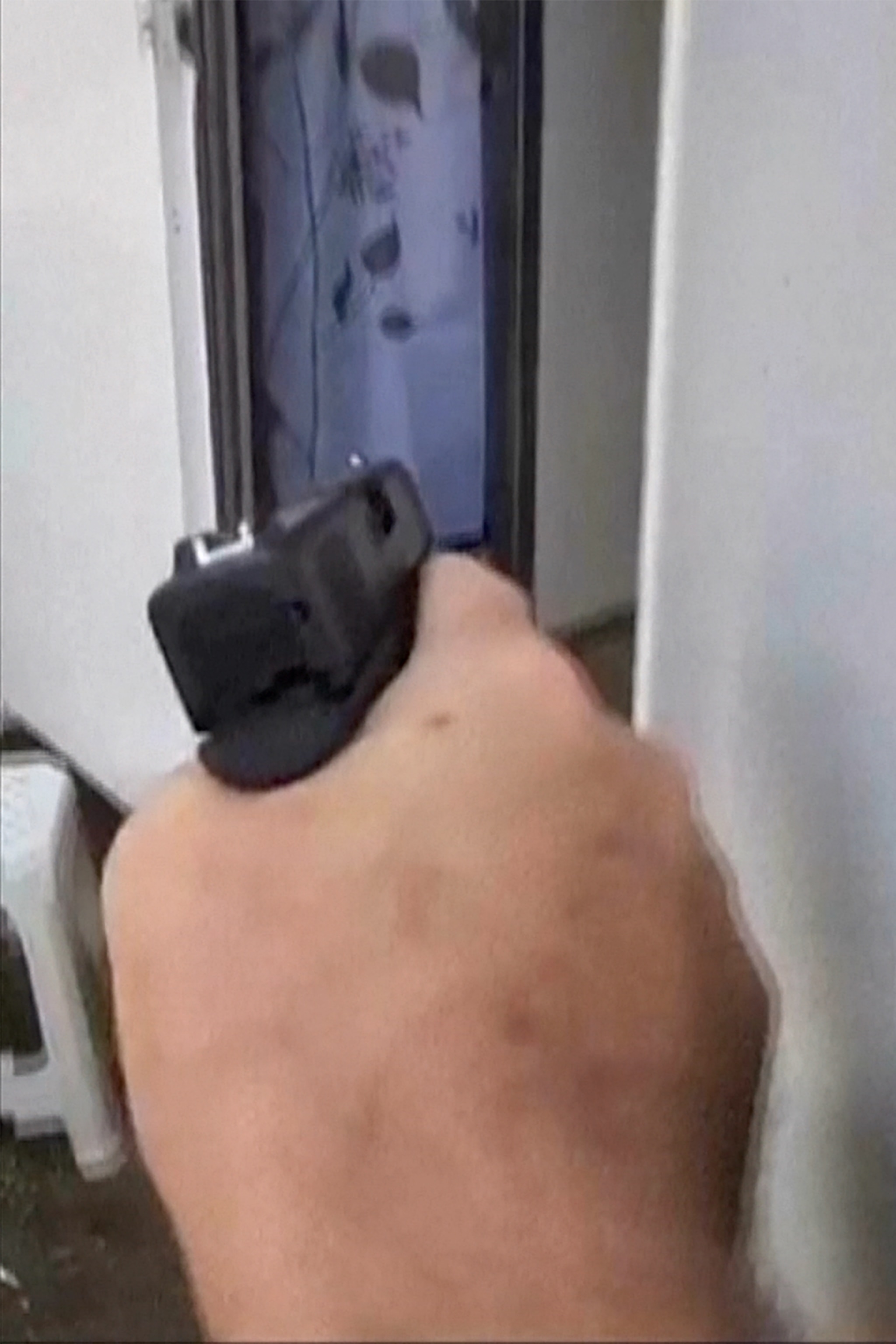
First responder Eran Masas points a 9mm pistol into the entrance of an RV on October 7, 2023, not knowing what he would find inside — terrorists, or survivors from the Supernova music festival massacre.
Eran Masas/AP
The video shows Masas and other first responders spread out across the music festival grounds, searching section by section. They look under the music stage, behind the bar, beneath vehicles and inside caravans.
“Police! IDF!” Masas can be heard shouting in Hebrew in the video, as his shaking hand opens up a trailer door.
“Who’s inside? Is there someone in the bathtub? Is there anyone here?” he calls out, aiming his gun ahead of him.
Silence.
Masas continues to search the area, checking in bullet-ridden cars; he can be heard breathing heavily. With the sun overhead, the camera points down, showing Masas’ pistol-holding shadow as he makes his way toward one of the festival’s bars.
“One, two, three, four, five,” he says in the video, counting the face-down bodies as he discovers them, including one police officer.
And then he says, “Oh no.”
The camera peeks over the edge of the bar. Bodies and blood can be seen covering the ground, the victims tucked between trash bags and refrigerated beverage carts.
In another video Masas shared with ABC News, his camera pans around to show a still-smoking mound, surrounded by blackened, charred remains of multiple bodies.
“It’s not what I see,” he told ABC News. “It was what I smell[ed]. Flesh and bone. Flesh and blood.”
The bodies Masas found are just a fraction of the more than 1,400 people killed in Israel during Hamas’ Oct. 7 attack, with at least 6,900 others injured, according to the Israeli prime minister’s office. Since Israel launched retaliatory strikes, more than 10,500 people have been killed in Gaza, according to the Hamas-run Gaza Health Ministry.
More than a month since the war began, Israeli officials say 240 hostages are being held in Gaza.
At the closed security area on Tuesday, Masas saw what remains of the music festival; forensic specialists have been pouring over the scene.
“This is hell,” he said, looking out onto row after row after row of burned-out vehicles, their singed metal frames all that remain. “It looks like hell.”
It’s the first time Masas has seen the vehicles since the attack.
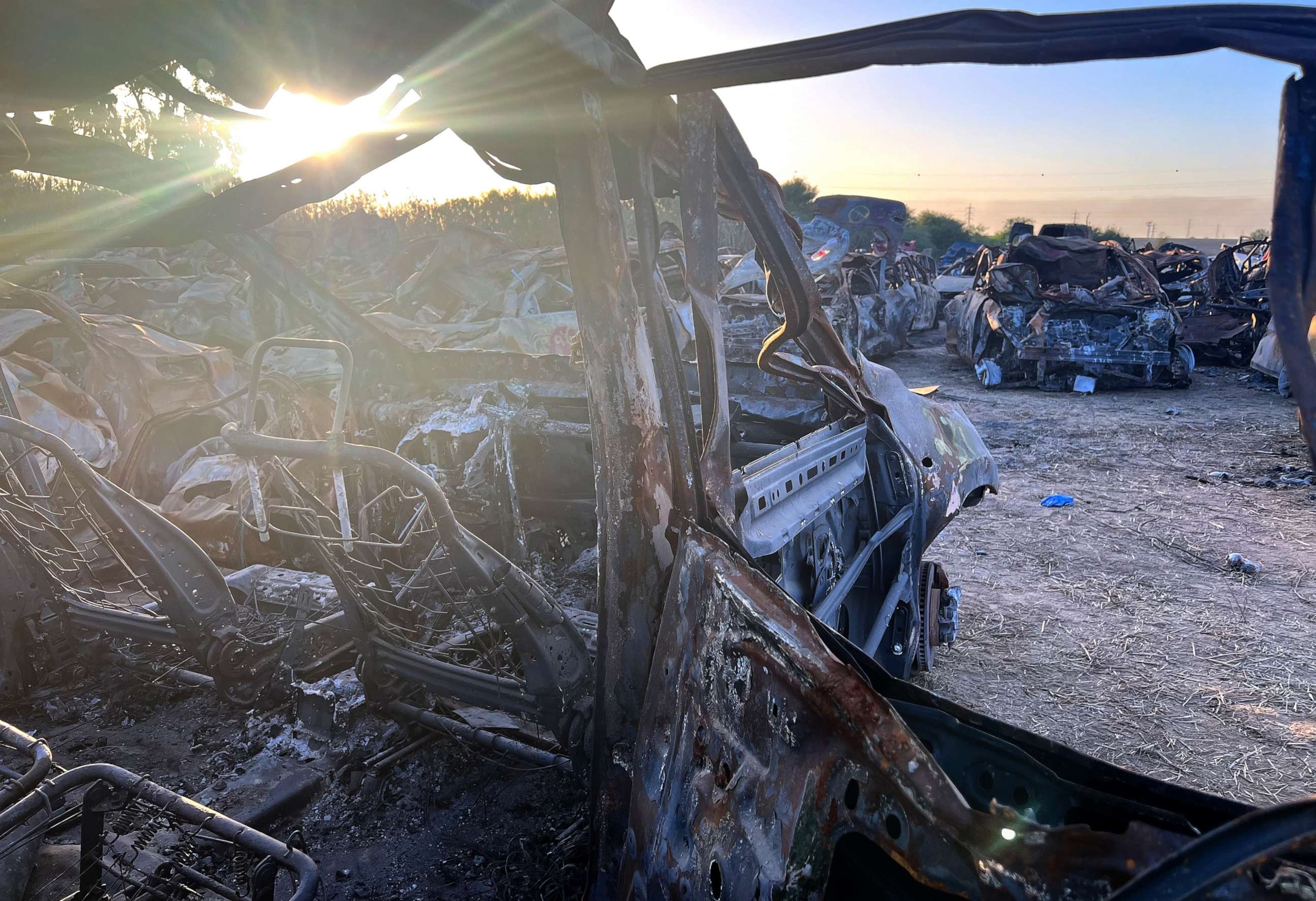
A burnt-out car stands in the setting sun near Netivot, Israel, one of hundreds like it that were recovered from the scene of the deadly Supernova music festival massacre. Hamas terrorists brutally murdered more than 260 people there on October 7, making it one of the worst civilian casualty incidents in Israel’s history.
Becky Perlow/ABC News
“I just wanted to find people alive. That was the main goal, to find people alive, to hear someone, to help someone and to take them to a safe place,” he told ABC News.
“But when you see body after body, you just don’t have any feeling,” he continued, “I know that in each car like that, there was a life before.”
Those lives, he said, the faces of the dead Israelis he found, continue to haunt him more than a month later. When he returned home from the festival, his uniform was covered in so much blood, he said he burned it so his wife wouldn’t see it.
“What’s happened here? It’s something that unforgivable,” he added. “It’s something that the world should know.”
ABC News’ Yael Benaya and Dorit Long contributed to this report.
